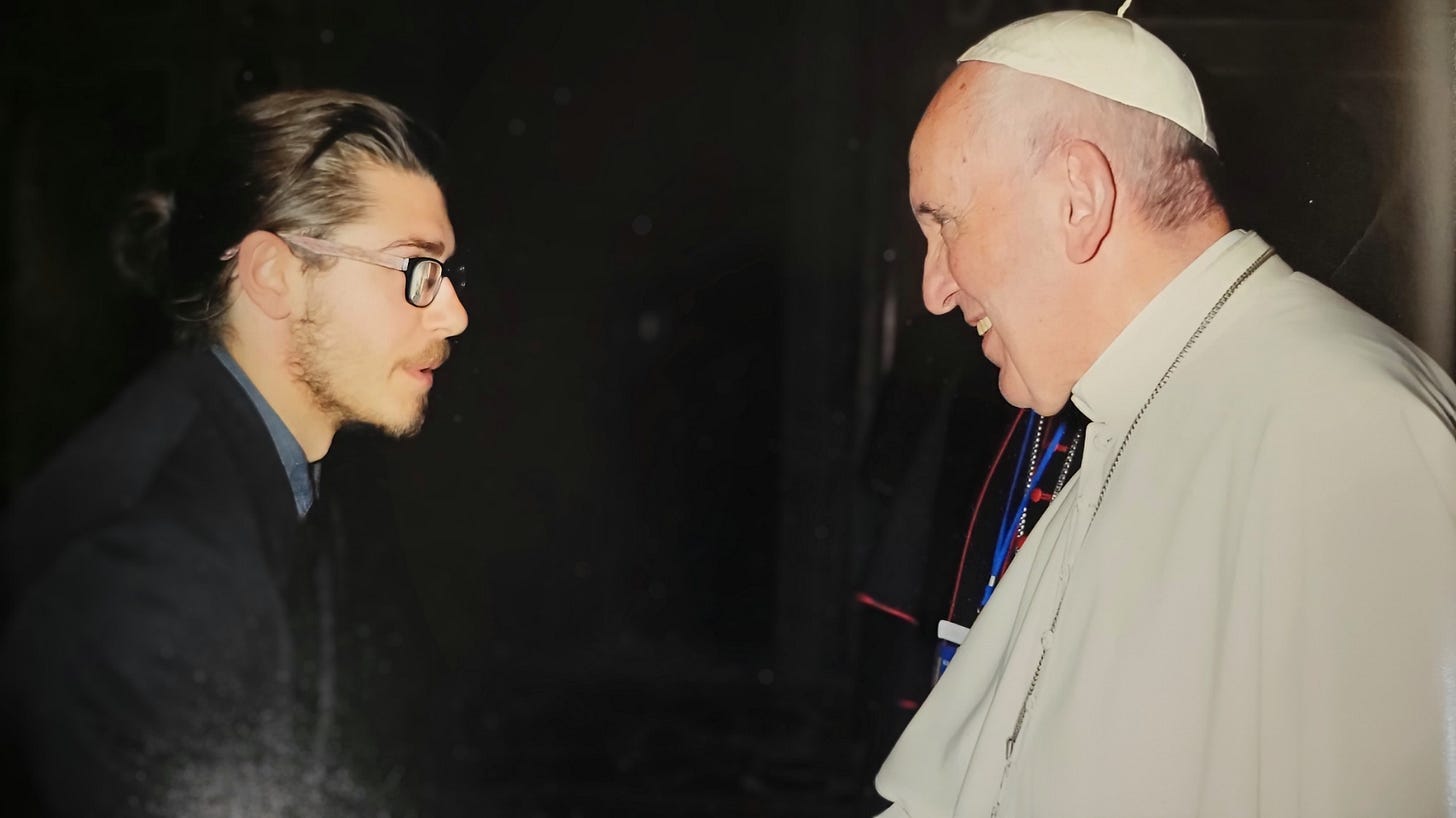Pope Francis: An Eastern Catholic's Perspective
Black smoke again—some reflection on the Pope Francis' pontificate while the Conclave is underway.

On the day of Pope Francis’s funeral, a short video clip of the service circulated across the internet. In it, Eastern Catholic delegates surrounded the coffin of the now deceased Francis and chanted a hymn in Greek proclaiming Christ’s resurrection: “Christ is risen from the dead, trampling down death by death.” To many, this was a testimony to the unity and diversity of the Catholic Church. The beauty of the Catholic tradition, East and West, has captivated believers and onlookers since its inception. And yet, the rich heritage of Eastern Christianity remains relatively unknown.
For some background, about 1,000 years ago, the Church suffered a schism—splitting the one, holy, catholic, and apostolic Church into geographical regions: East and West. Over the centuries, there have been attempts at reunion with varying degrees of success. The Councils of Uzhhorod and Brest established the creation of sui iuris Eastern Catholic Churches in communion with Rome.
But, for decades, these Easterners in Roman communion were seen as second-class Catholics, derogatorily called “uniates.” Even today, I have heard some priests characterize this union as a concession to those who like the tradition until they are ready to be ushered into the fullness of the Latin faith.
However, on the whole, since Vatican I and II, the Church in her official capacity has been making a concerted effort towards union with the Orthodox and has bolstered and encouraged the Eastern Christians in communion with the Chair of St. Peter to preserve and invigorate their traditions.
With the death of the Bishop of Rome and the Conclave underway, we have an opportunity to review Francis’s pontificate and see—particularly from an Eastern Christian perspective—what his impact was, and what we can hope for moving forward. In fact, despite Francis’s papacy being marked by theological and political confusion, there are some clear instances in his pontificate that can be seen to set the tone for what to hope for.
Last year, the Vatican released a study document titled The Bishop of Rome. In that document, the Holy See seemed to endorse a healthy decentralization inspired by the model of the ancient patriarchal Churches. This document appeared just weeks after Pope Francis reinstated the title “Patriarch of the West” in the Annuario Pontificio, the official papal yearbook—a title abandoned by Pope Benedict XVI in 2006 as historically obsolete.
The restoration of the title, in conjunction with the release of the Bishop of Rome study, suggests a renewed self-understanding of the Chair of St. Peter and the various offices held by that one man: Bishop of Rome, Patriarch of the West, and Universal Pontiff. It signaled an openness to subsidiarity in ecclesial governance—a principle deeply rooted in both Catholic ecclesiology and Catholic social teaching.
A manifestation of this subsidiary governance was when Francis lifted an 85-year ban on the ordination of married Eastern Catholic men to the priesthood outside their traditional homelands. This restoration of an authentic Eastern practice was called “a blessing” by Melkite Bishop Nicholas Samra, who said it allowed him to ordain nearly 20 men for U.S. Melkite parishes that would otherwise lack clergy. Maronite Bishop Gregory Mansour said the decision “helped heal a wound.”
However, in looking forward, we need to address the elephant of the Pontificate: Synodality. While often presented as a return to the conciliar and collegial life of the early Church, synodality as it has unfolded under Francis has been ambiguous in both purpose and effect. And it risks becoming less about recovering the authentic structures of communion and more about introducing a managerial ethos into the life of the Church. The talk of listening sessions, consultations, and processes, on the face of it, resembles bureaucratic meaninglessnes, in contrast to a synodality of hierarchy and tradition.
The procedural focus tends to overshadow what true synodality meant in the first millennium: a life of shared responsibility among bishops, rooted in apostolic tradition, guided by the Holy Spirit, and ordered toward unity in Truth.
From an Eastern Catholic perspective, synodality must be grounded in the model of the ancient patriarchal churches—a model which presupposes authority, tradition, and a clear understanding of the subsidairic roles of bishop, patriarch, and pope. In this context, the title Patriarch of the West has real meaning conveying the idea that the Bishop of Rome governs the Latin Church as a patriarch among patriarchs, not as a global administrator of endless synods.
If synodality is going to be anything, the future pope has to build on these moments of clarity from Francis’s pontificate, and not perpetuate the reduction of synodality to a process that lacks substance. This means not only giving Eastern Catholics the power to govern what they are capable of governing, but also the local bishops of the Latin Church (in their particular diocese and regions) need this freedom. A vision of unity that is rooted in the diverse and harmonious structure of the Church as it existed in the undivided first millennium does not crush beloved liturgical traditions without adequate development, give lip service to ambiguity, sow confusion, or depose or defrock some bishops and priests on a whim.
A synodal church is incompatible with an authoritarian one.
If the next pontificate can continue and concretize the work of restoring a proper ecclesiology—where the Bishop of Rome is truly the first among brothers—then the full flourishing of all 24 Churches in Communion with the Chair of St. Peter is possible.



